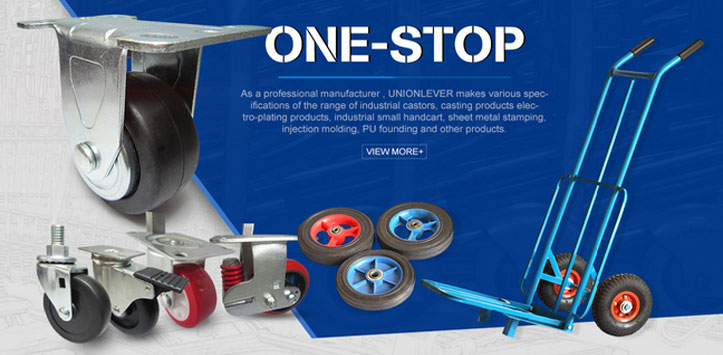Caster
2015-08-06 02:36:36 | 阅读(1637)

How to Select the Right Caster
For over 15 years, UNIONLEVER has been writing the science of caster technology with you in mind. From industry-changing innovations, to cost-cutting efficiencies, UNIONLEVER continues its commitment to you—our customer. As UNIONLEVER, we believe success comes from providing expert solutions for our customers and unmatched support to our distributors. Click below on the various links for helpful information related to caster designs and terminology, as well as specific tools for selecting and ordering our products.
How to Select the Proper Caster and Wheel
There is no simple formula or rule that can be followed in selecting the proper casters. Many varying and individual factors must be balanced to make the selection that will do the best job for you. The following are several of the more important considerations.
Load Weight. The heavier the load, the larger the wheel required for the caster. The weight of the load also influences the mobility of the wheel. Roller or ball bearings are recommended for loads over 400 pounds. Weight capacities are shown for each caster in this catalog.
Floor Conditions. Make sure the wheel you select is large enough to pass over cracks in the floor, tracks, moldings and other obstructions. For floor protection on linoleum, tile, carpet, etc., use polyurethane or Performa rubber wheels.
Unusual Conditions. Each wheel material has certain characteristics which will give the best results where unusual conditions exist. For example, where acids, oils, chemicals and other conditions harmful to rubber are present, UNIONLEVER polyurethane, polyolefin, Maxim, phenolic or steel wheels are recommended. Check conditions, then select caster and wheel.
Rolling Ease. The larger the wheel diameter, the easier it rolls. Roller bearings carry heavier loads. Ball bearings roll easier but carry lesser loads. When possible, use the largest ball bearing wheel for best results.
Extreme Climates. Room temperatures are no problem for most casters. But extreme cold or heat can be a problem. UNIONLEVER helps solve this problem with “Colson 45”... the green lube which assures caster rolling ease from 45°F below zero to 260°F above. It’s standard on all UNIONLEVER casters. (Note: Some wheel types should not be used in extreme temperature ranges. Consult us).
- Pre:PVC SHEET
- Next:没有了!




